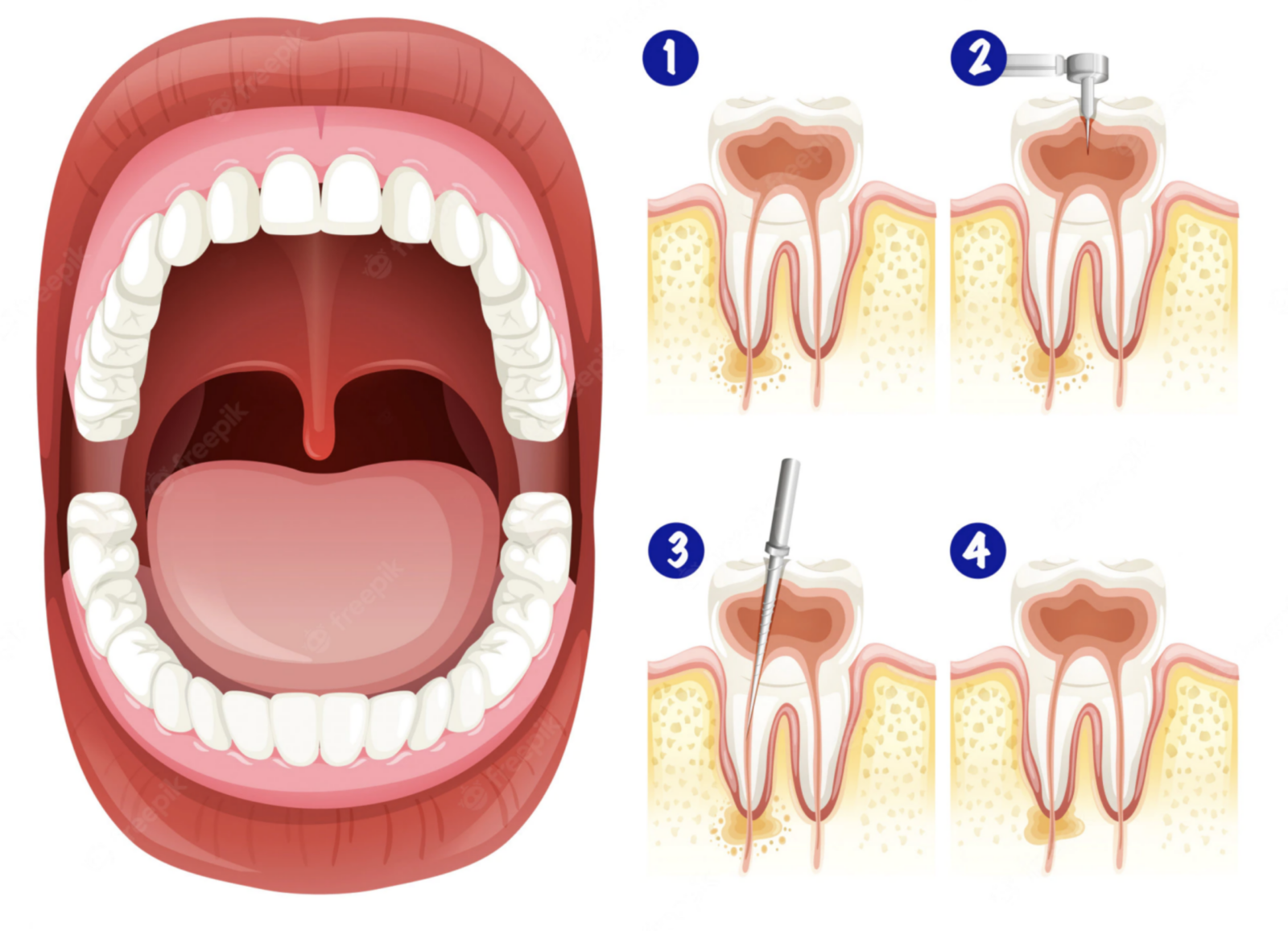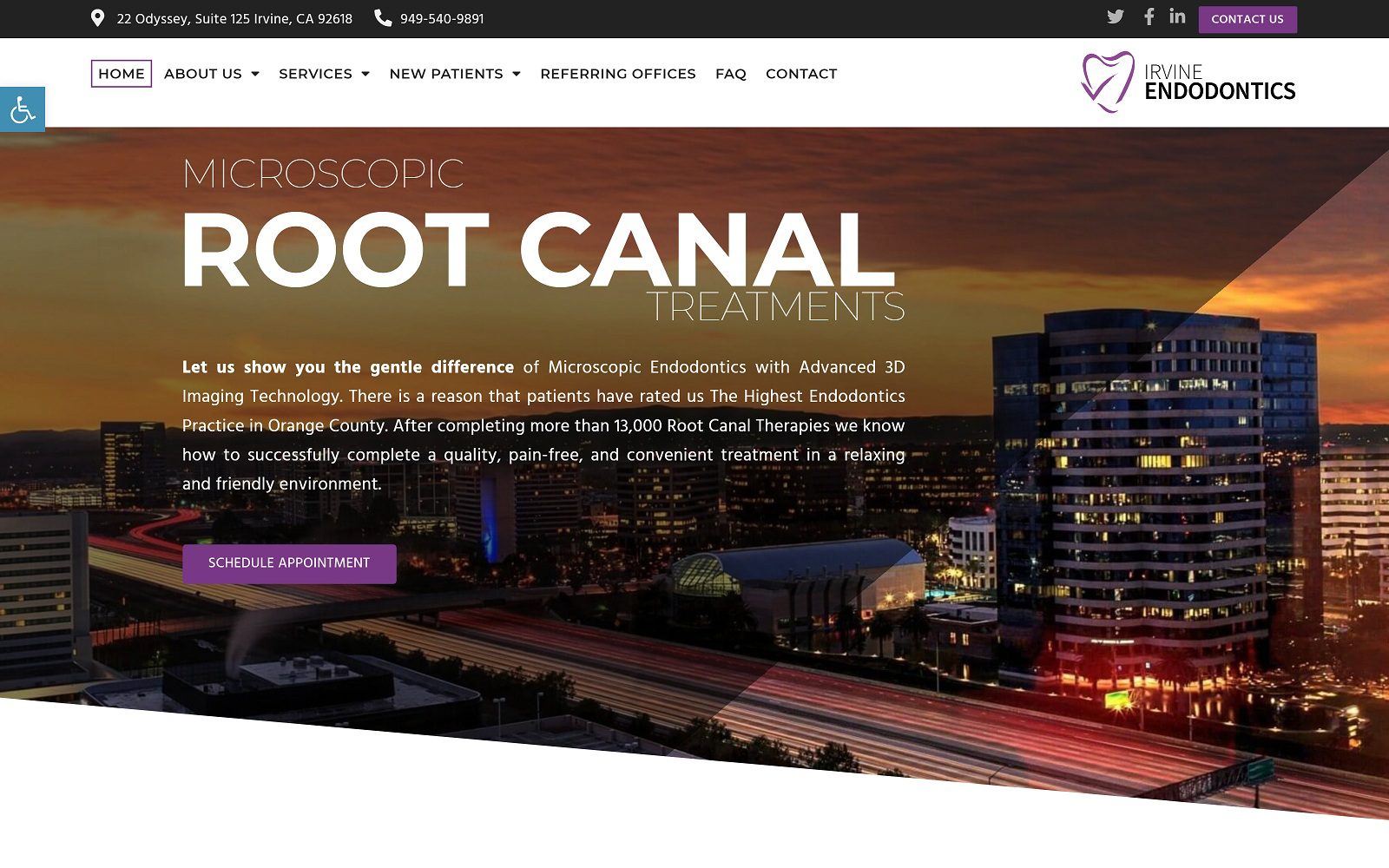Have you ever encountered the term “root canal”? This dental procedure, which is frequently performed, involves addressing damaged or contaminated tooth tissue by removing it from the root of the tooth, followed by filling the canal with a material to reduce the risk of further contamination and sealing the tooth with a crown or filling. “The Guide to Root Canals” offers a comprehensive examination of this widely utilized dental treatment, encompassing the causes and indications of pulp infections that necessitate root canals, as well as delving into the potential dangers of the procedure. Additionally, this guide provides valuable insights on how to evade the need for a root canal in the future. Whether you are a dentist, a patient, or simply seeking a deeper understanding of root canals, “The Guide to Root Canals” is a treasure trove of information that you will find invaluable.
Causes of root canals
The most ubiquitous trigger for root canal therapy is a bacterial infiltration that has permeated the pulp of the tooth, a vital tissue encased within the enamel. Such an invasion can occur through a range of mechanisms, including:
- Caries: The insidious advance of cavities, left unaddressed, can traverse the tooth and invade the pulp, resulting in infection.
- Fissures: A tooth that sustains a crack or break may permit bacteria to infiltrate the pulp, inciting an infection.
- Past Dental Procedures: Occasionally, prior dental procedures, such as fillings or crowns, may be flawed and allow bacteria to penetrate the pulp, leading to contamination.
- Periodontal Illness: When the gums become diseased, bacteria may gain entry to the pulp via the roots of the tooth.
Symptoms of root canals
Root canals may be required when a pulp infection has taken hold, and the following signs may serve as indicators:
- Aching Agony: The most conspicuous indication of a pulp infection is a toothache of great intensity, which may be further exacerbated by sensitivity to hot or cold stimuli or pressure.
- Gum Inflammation and Reddening: The gums surrounding the infected tooth may exhibit symptoms of swelling and a reddish hue.
- Purulent Discharge: Visible pus may be present at the location of the infection.
- Feverish Indicators: A mild elevation of body temperature in the form of a low-grade fever may be evident as a manifestation of a systemic infection.
- Tooth Discoloration: Prolonged exposure to an infected pulp may result in the tooth taking on a darkened appearance.
It is imperative to remember that some individuals may not exhibit any symptoms, despite harboring an infected pulp. Hence, regularly scheduled dental check-ups are crucial to identify any potential issues.
The root canal procedure

The root canal procedure, a complex and intricate process, entails the elimination of damaged or contaminated pulp tissue from the tooth’s root canal. With the utilization of a local anesthetic to induce numbness in the tooth and surrounding gum tissue, the dentist endeavors to ensure a pain-free experience for the patient. In a meticulously orchestrated manner, the dentist employs a minute dental drill to extract the damaged tissue, following which the root canal undergoes a thorough cleaning to eliminate any residual debris through irrigation. Subsequently, the root canal is disinfected and hermetically sealed using a filling material, after which the tooth’s appearance and functionality are restored through the placement of a crown or filling. The duration of the procedure may vary, contingent upon the severity of the infection, with multiple visits being necessary for some instances. Utilizing advanced imaging techniques such as X-rays, CT scans, and MRIs, the dentist strives to accurately identify the infected tooth and assess the extent of the damage.
Potential risks and complications
Though root canal procedures are commonly considered safe and successful, they may entail various hazards. Herein, we enumerate some of the possible perils associated with a root canal:
- Inadequate Eradication of Infection: If the infectious pulp is not wholly extirpated during the root canal procedure, it may reoccur and necessitate further remediation.
- Agony or Annoyance: Some individuals may experience discomfort or pain post-root canal, although such symptoms are frequently trifling and can be alleviated with readily accessible over-the-counter analgesics.
- Fragmentation: After a root canal, the tooth may become fragile and hence susceptible to breaking or cracking.
- Neural Disruption: In exceptional circumstances, the nerves within a tooth may incur damage during a root canal procedure, resulting in numbness or tingling in the lips, tongue, or chin.
- Postoperative Contamination: There is a slight chance of contamination after a root canal, be it in the tooth itself or the adjacent tissues. Your dentist will furnish you with postoperative care directives to prevent infection.
Alternative treatments available
Besides root canals, there are two other common treatments for tooth infection:
- Antibiotics: If the infection is severe or the person has other health conditions that make them more prone to infection, the dentist may prescribe antibiotics.
- Drainage: If the infection has caused an abscess (a pocket of pus) to form, the dentist may need to make a small hole in the tooth to drain it.
Maintaining oral health to prevent root canals
While bi-annual visits to your dental practitioner for assessments and cleanings are a crucial aspect of maintaining healthy teeth, there are several additional measures that you can undertake within the confines of your home to steer clear of root canals. These proactive steps are:
- Brushing Your Teeth with Fluoride-Infused Toothpaste: This routine, performed twice daily, helps to eradicate plaque (a tenacious film of bacteria) from your pearly whites and gum line.
- Flossing Every Day: This practice aids in the removal of plaque and food particles trapped between your teeth, which your toothbrush may not effectively reach.
- Utilizing Antibacterial Mouthwash: This oral care product can eradicate bacteria and leave your breath smelling fresh.
- Drinking an Adequate Amount of Water: Water acts as a rinse, washing away food particles and bacteria from your oral cavity.
- Adopting a Nutrient-Dense Diet: A diet comprising of a bountiful amount of fruits, vegetables, and other essential nutrients can help keep your teeth and gums in tip-top shape.
- Abstaining from Sugary and Acidic Foods and Beverages: These can inflict damage on your teeth and increase the likelihood of developing cavities.
How to select a dentist for root canals

The selection of a dentist for root canal therapy is a task that requires a great deal of care and attention. To ensure you make the best choice, consider the following elements:
- Expertise and Proficiency: Seek out a dental practitioner with specialized training and extensive experience in performing root canal procedures. An endodontist is a specialist who has undergone extensive training and possesses an unparalleled mastery in the diagnosis and treatment of dental pulp and nerves.
- Patient Feedback and Prestige: Thoroughly examine the practitioner’s reviews and reputation to gain insight into their level of skill and the satisfaction of their patients.
- Geographical Proximity and Office Timings: Take into account the location and office hours of the practitioner’s clinic to ensure that scheduling appointments and reaching the office is a convenient affair.
- Communication: Evaluate the effectiveness of the practitioner’s communication skills and assess whether they are forthcoming in explaining the procedure and answering your queries.
- Financial Considerations: Compare the cost of the procedure with other dental practitioners to ensure that you are being charged a fair price.
It is also advisable to seek the advice of your general dentist prior to scheduling root canal therapy.
Cost of root canals
The cost of undergoing a root canal procedure can be influenced by a multitude of factors, including the type of tooth in need of the procedure, and the extent of insurance coverage.
The American Association of Endodontists sheds light on the average cost of a root canal, with a front tooth costing roughly $935, while the cost for a molar tooth can be around $1,100. This difference in price can be attributed to the size of the molar and the number of roots it possesses, in comparison to front teeth.
It is advisable to consult with your insurance provider to determine the scope of coverage for a root canal procedure. Dental insurance plans often cover a portion of the cost, however, the amount of coverage and terms of the plan can differ from provider to provider and from plan to plan. To get an accurate estimate of the cost and what it entails, it is recommended to approach your dentist.
Resources for further information
- Dental Society: The American Dental Association publishes articles, provides patient education materials, and hosts events and conferences for dental professionals.
- Dentist: Find a local dentist and learn about the services they offer. A dentist can also provide information on the different types of dental insurance and how they work.



